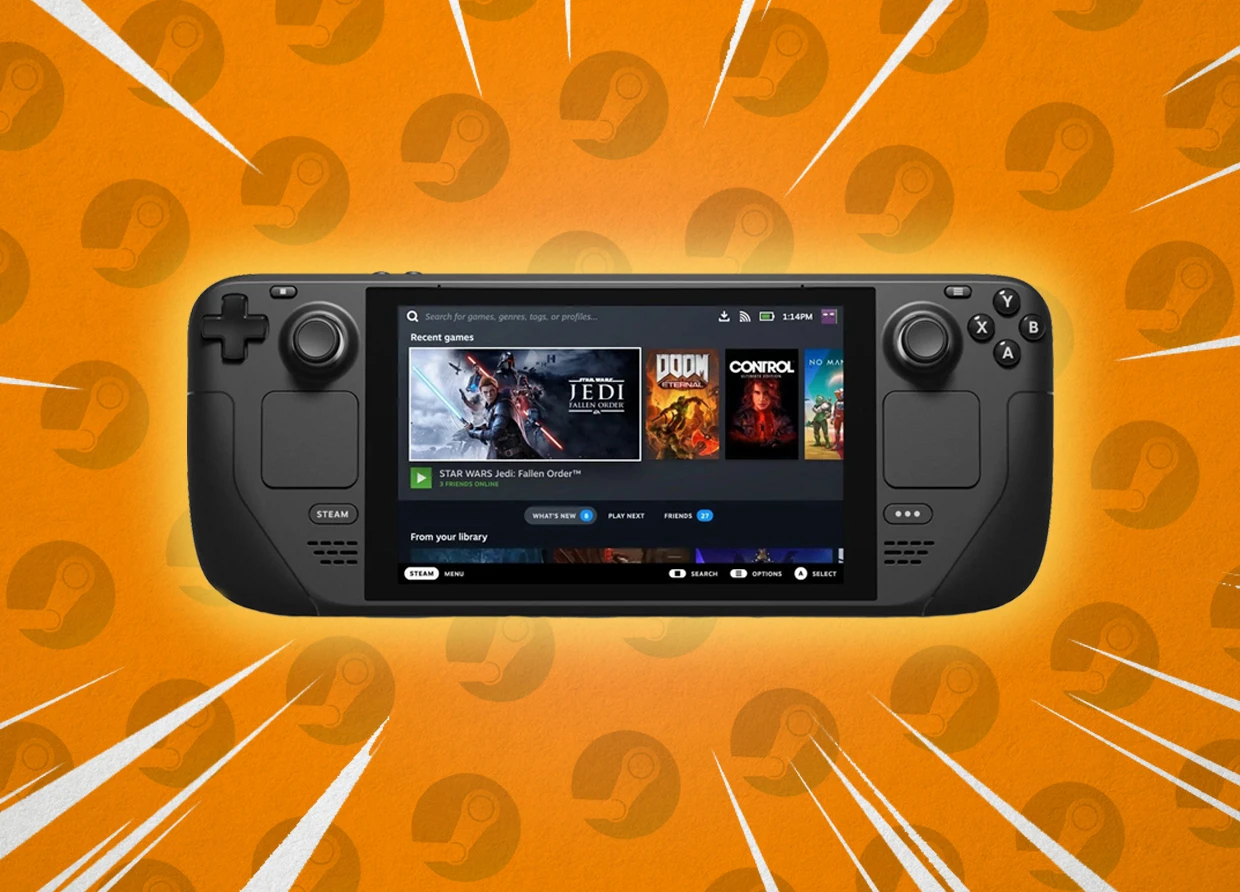STEAM DECK HANDHELD GAME CONSOLE HAS PC EQUIVALENT CAPABILITIES
Nintendo Switch rivals with similar features but different specifications.

Nintendo Switch is currently the most popular portable gaming device. Since it arrived in 2017, Switch has competed with game consoles such as the PS4 and Xbox thanks to its docking capabilities to television sets and the ability to play interactively.
Recently, the game distribution platform company Valve released Steam Deck, which is almost like the Nintendo Switch. This will make competition in handheld games not only owned by Switch, but even Valve also claims many games to choose from on their console.
Deck specifications are superior for handheld sizes, especially the processor (CPU) used on the PS5 device, namely Zen 2 CPU with 2 cores, AMD RDNA 2 GPU and 16 GB RAM. In comparison, this processor is the same as the AMD Ryzen 3000-series used in 2019 desktops, while the GPU is similar to the Radeon RX 6000-series graphic architecture introduced in 2020.
Game storage on the Deck uses three storage media options, namely 64 GB eMMC, 256 GB NVMe SSD and 512 GB high-speed NVMe SSD, which can still be expanded with a microSD.
View this post on Instagram
The problem with portable gaming devices is in the battery power that quickly decreases when used. This problem is claimed to be resolved on the Deck, which has a 40-watt hour battery that can last up to 8 hours for light gaming, streaming, or browsing. Use in big games, such as Portal 2, will make battery life to 4 hours. Valve revealed that this device can be used for 5 to 6 hours if the user limits the in-game frame rate to 30 fps.
The Deck operating system uses Arch Linux-based SteamOS 3.0 combined with a Linux compatibility layer called Proton. This is so that the Deck can later run various Windows games smoothly.
This handheld device can run computer games without the need for unique porting by game developers. Like the Switch, Deck users can stream games from the console to the TV via a separate accessory dock or using a cable.
The 7-inch LCD screen has a quality that satisfies game fans because it has a resolution of 1,280 x 800 pixels with a refresh rate of 60 Hz. This screen has a speed of 400 nits (typical) with an ambient light sensor.
The Switch measures 241 millimetres in length, 116 millimetres in width and 48 millimetres in thickness, while the Deck is more enormous at 298 millimetres in length, 117 millimetres in width and 49 millimetres in thickness. The Switch weighs around 400 grams and the Deck 669 grams, so this new device from Valve will look big and heavy.
Steam Deck reservations are now open to new Steam accounts as well as old! Visit https://t.co/z8R4GUB0hd and log in or create a free Steam account to choose your Deck.
— Steam (@Steam) July 18, 2021
Learn more about Steam Deck at https://t.co/ZOTx3KUCVK. #SteamDeck pic.twitter.com/p8o2IwAIRl
Some of the equipment and sensors on the Deck are pretty familiar to game fans. There are operation buttons A, B, X and Y, and directional navigation buttons (D-pad). Left and right analogue with L3 R3 triggers, L1, L2, R1 and R2 trigger buttons. The device has 2 trackpads and a 76-axis IMU gyroscope sensor. Deck devices also have a Bluetooth 5.0 connection, Wifi 802, dual microphones, dual speakers, 3.5 mm audio jack and USB Type-C.
So how much does it cost? The price for the cheapest model is 400 USD or around Rp5.8 million for the 64 GB storage version, 529 USD or Rp7 million for the 256 GB version and USD 649 or Rp9 million for the 5`1 GB version.
For fans of handheld games in Indonesia, please be patient to get this device because the ordering site is currently not accepting orders from the Southeast Asian region. Valve promised to sell the Deck outside the United States, Canada, UK, and Europe in 2022.



























